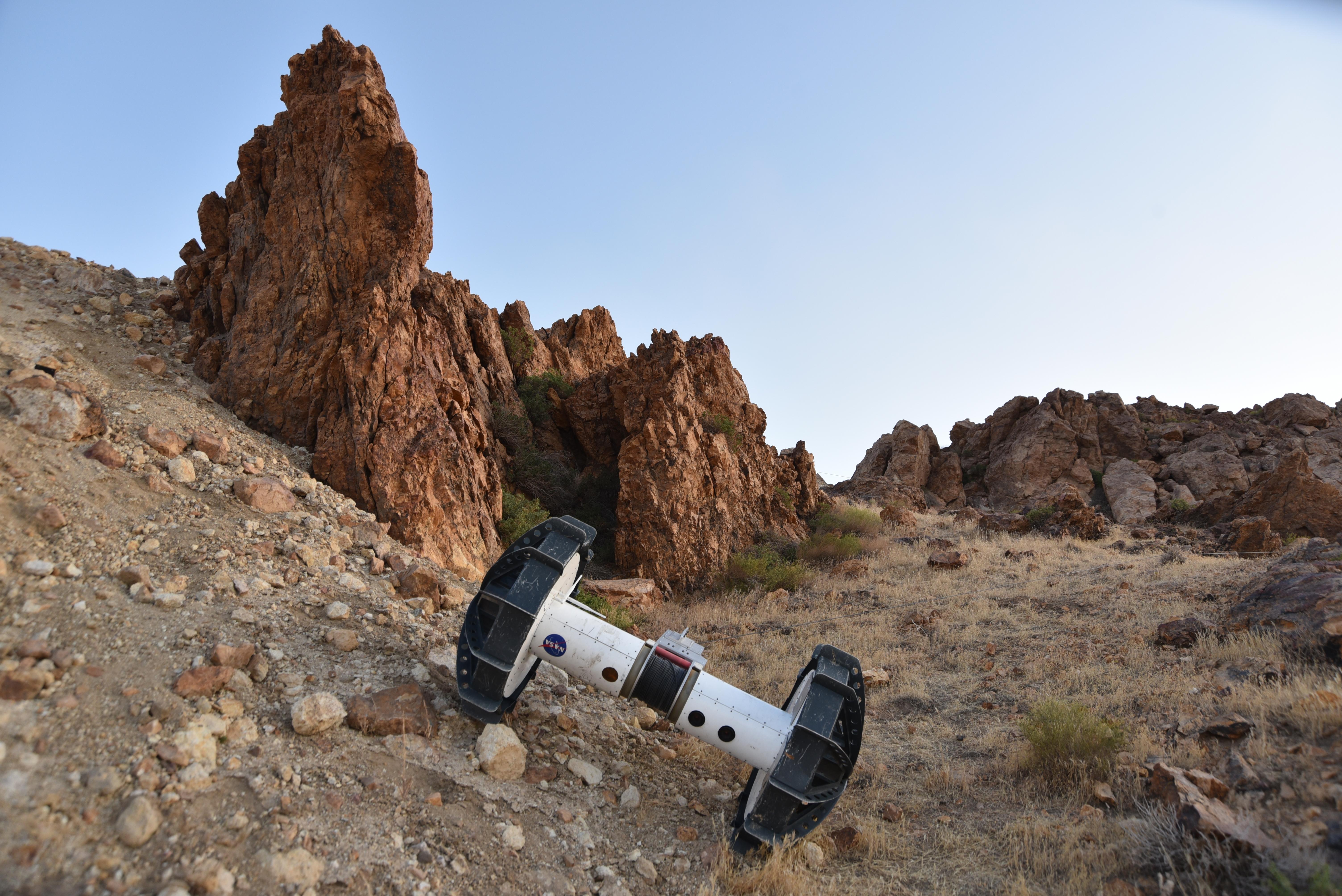
|
The Tethered Axel Autonomously Descends a Rocky Slope
- Click the image above for a larger view
- Full-Res JPEG (6016 x 4016) (2.3 MB)
- Full-Res TIFF (6016 x 4016) (68.0 MB)
Caption:
In this photograph, a tethered Axel robot — part of the four-wheeled DuAxel rover — navigates a steep slope during a field test in the Mojave Desert. The tether, which connects to the rover's other half, serves as a climbing rope of sorts while also providing power and a means of communication.
This flexibility was built with crater walls, pits, scarps, vents, and other extreme terrain in mind. That's because on Earth, some of the best locations to study geology can be found in rocky outcrops and cliff faces, where many layers of the past are neatly exposed. They're hard enough to reach here, let alone on the Moon, Mars, and other celestial bodies.
Background Info:
The DuAxel project is a technology demonstration being developed by roboticists at NASA's Jet Propulsion Laboratory in Southern California to see how this unconventional rover might fill a niche in planetary exploration.
More information about Axel can be found here: https://www-robotics.jpl.nasa.gov/systems/system.cfm?System=16
Cataloging Keywords:
| Name | Value | Additional Values |
|---|---|---|
| Target | Mars | |
| System | ||
| Target Type | Planet | |
| Mission | DuAxel Project | |
| Instrument Host | ||
| Host Type | ||
| Instrument | ||
| Detector | ||
| Extra Keywords | Color, Crater | |
| Acquisition Date | ||
| Release Date | 2020-10-13 | |
| Date in Caption | ||
| Image Credit | NASA/JPL-Caltech/J.D. Gammell | |
| Source | photojournal.jpl.nasa.gov/catalog/PIA24110 | |
| Identifier | PIA24110 | |
